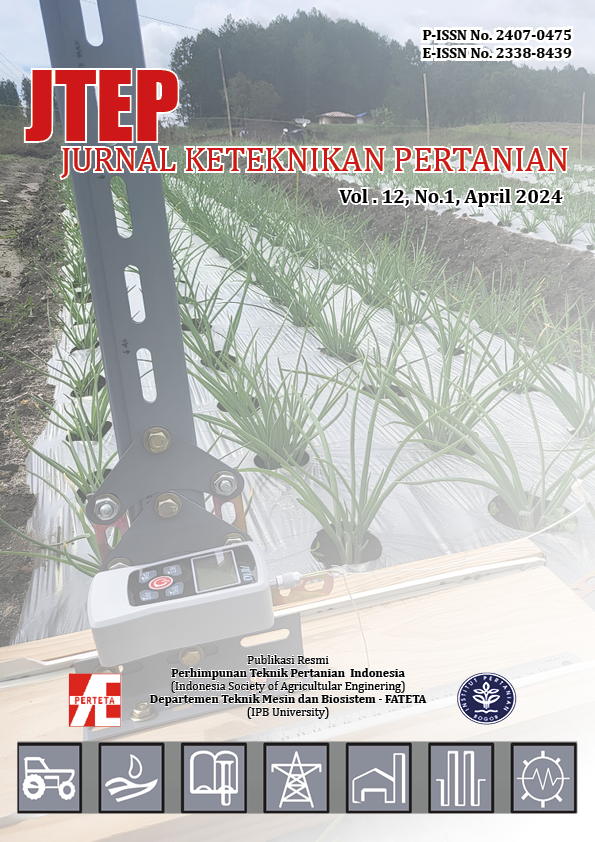Penyimpangan Iklim ENSO dan IOD di Kalimantan Tengah Serta Kaitannya dengan Produksi Kelapa Sawit
Abstract
Oil palm is a plantation crop that requires even rainfall throughout the year. Rainfall in Indonesia has 3 patterns, namely monsoonal, equatorial and local patterns. PT Harapan Hybrid Kalbar Sungai Bila Estate is the study area for this research which has an equatorial rainfall pattern. Rainfall can deviate from the general pattern of climatic conditions due to the climate variability of the El Nino Southern Oscillation and the Indian Ocean Dipole. The results of the Pearson correlation coefficient between the June July August and September October November rainfall with the El Nino Southern Oscillation index are -0.78** and -0.64*. El-Nino Southern Oscillation has a strong and inverse relationship with rainfall in the study area during the dry season with a significant value at a confidence interval of 0.01 (June, July, August) and 0.05 (September, October, November). Results of the Pearson correlation coefficient between rainfall monsoon rains June July August and September October November with an Indian Ocean Dipole index of -0.4 and -0.5. The influence of the El Nino Southern Oscillation is stronger than that of the Indian Ocean Dipole in the study area. The El Nino (Lanina) phase causes rainfall in the study area to be lower (higher) than normal conditions, resulting in a long dry season (wet dry season). Palm oil production on Sandy Loam soil types is more volatile and more vulnerable during long periods of drought than clay soil types. Palm oil production is more influenced by the number of rainy days than the amount of accumulated rainfall in a year.
Authors

This work is licensed under a Creative Commons Attribution-ShareAlike 4.0 International License.
Authors submitting manuscripts should understand and agree that copyright of manuscripts of the article shall be assigned/transferred to Jurnal Keteknikan Pertanian. This work is licensed under a Creative Commons Attribution-ShareAlike 4.0 International License (CC BY-SA) where Authors and Readers can copy and redistribute the material in any medium or format, as well as remix, transform, and build upon the material for any purpose, but they must give appropriate credit (cite to the article or content), provide a link to the license, and indicate if changes were made. If you remix, transform, or build upon the material, you must distribute your contributions under the same license as the original.

